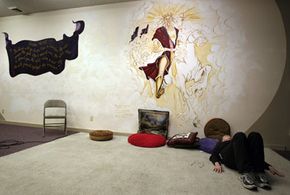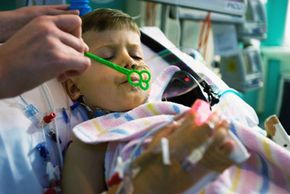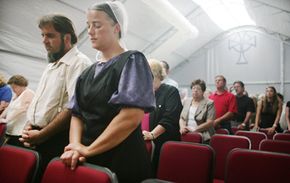As science investigates connections between the mind and the body, some scientists have found that a person's faith can help him or her live a longer, healthier life [source:Yang]. Prayer may lower blood pressure and heart rate, both of which can contribute to a more virile immune system [source: Bernardi, et al.].
Alternative Medicine Image Gallery
Advertisement
Other studies have found that people who are religiously active tend to be healthier. This may be due to the power of prayer, but it could also be explained by a tendency toward clean living, as many religions call upon their devotees to foreswear health risks like alcohol, cigarettes and casual sex. In addition, people active in their communities of faith may receive the help of social bonds within their religious groups. One study at the University of California - Berkeley factored in smoking and other lifestyle choices and still found that religious people have less risk for disease and death [source: Yang]. Inside the scientific community and out, many accept that praying can prove beneficial for a person’s health.
While praying for oneself may provide some health benefit, intercessory or distant prayer is another matter. Intercessory prayer (IP) is praying for a higher power to intercede on behalf of another person, usually for recovery from a health crisis. Distant prayer is a form of intercessory prayer in which someone prays for a person whom he or she has never met, often as a public request through a church or other institution of faith. The belief that this kind of prayer has any kind of effect on a person’s health invites scorn from much of the scientific community.
Scientific study on intercessory prayer has delivered mixed results, and those on each side of the debate embrace the results that support their beliefs. On one side are those who believe that things which can’t be proven via the scientific method doesn’t exist. On the other side are those who believe in the power of prayer -- whether science can prove it or not.
But why is it such a contentious issue? According to a study at the University of Rochester, as many as 85 percent of people suffering from disease pray in addition to receiving medical treatment. Prayer is the number one complementary medicine for Americans, more than vitamins, herbs or therapeutic exercise like yoga. If it makes someone feel better -- even if can't be proven scientifically -- what harm does prayer pose?
The notion that we humans possess a capability to heal others simply by using our minds -- or by calling upon a higher power to intercede -- flies in the face of science. But in the pursuit of the truth, researchers will investigate it scientifically. With so many people relying on prayer, scientists have a responsibility to determine whether it is helpful or harmful to people.
Read the next page to find out about some of the studies on remote and intercessory prayer.
Advertisement


